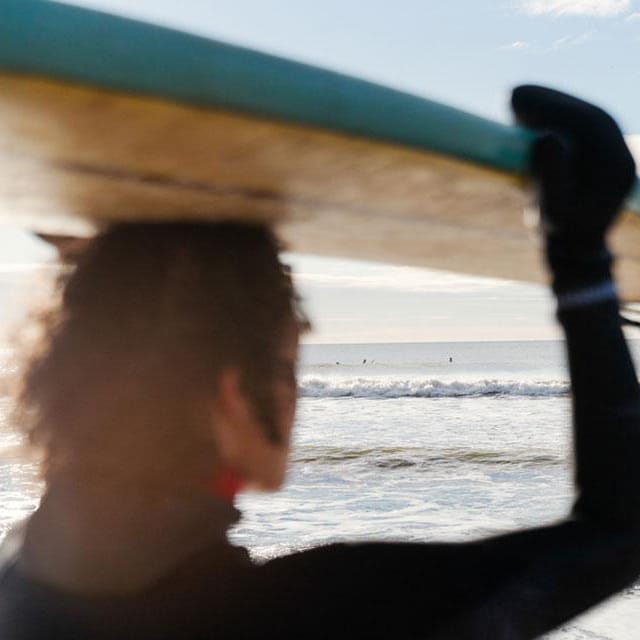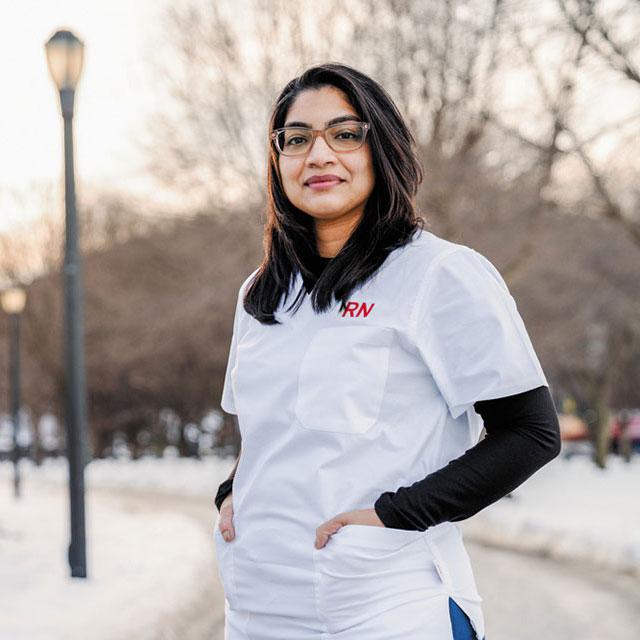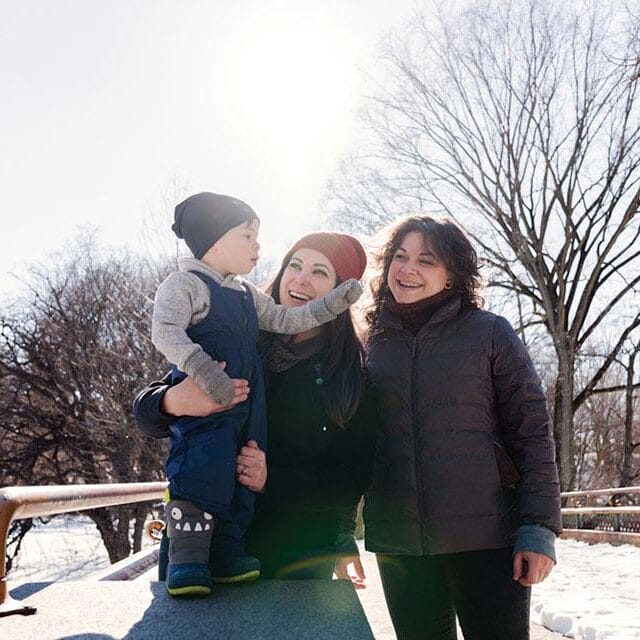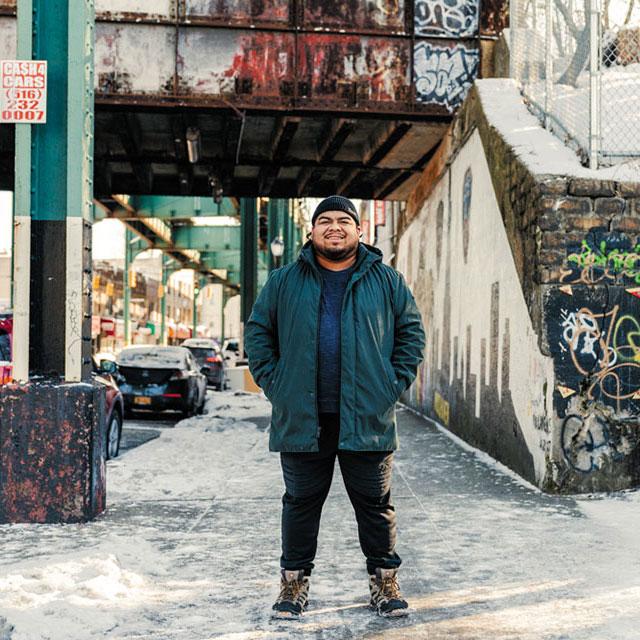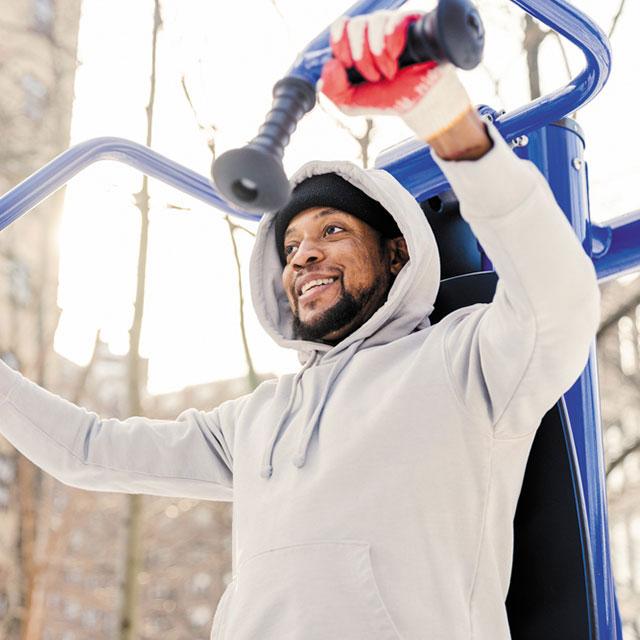A New York author and surfer finds solace in the waves off Rockaway Beach.
By Lisa W. Foderaro | Photographs by Tara Rice
Published May 18, 2021
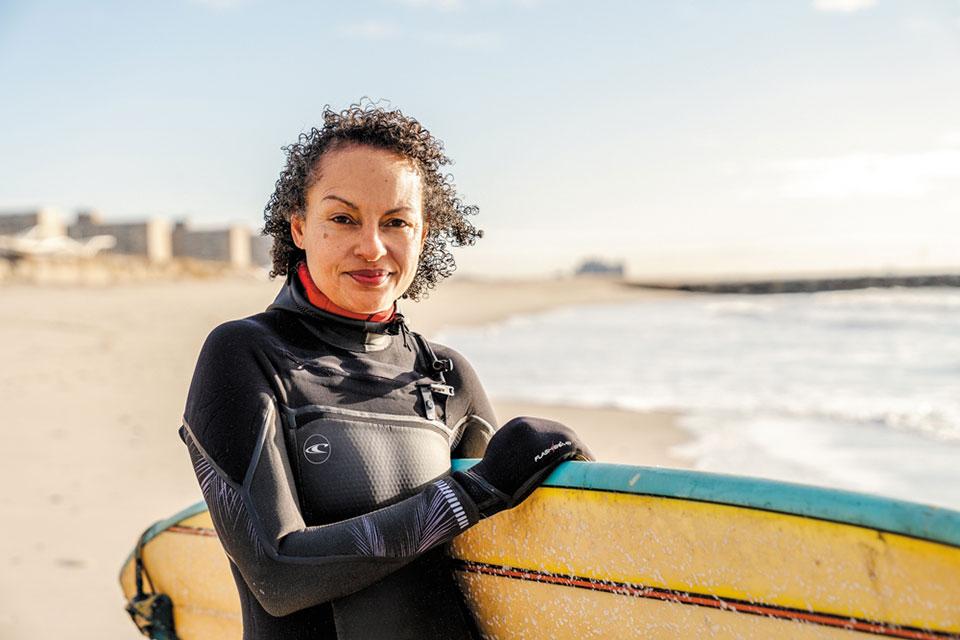 The waves at Rockaway Beach in Queens weren’t huge, but the beach was empty and the sky clear. She pulled on her burliest wetsuit, grabbed one of her six surfboards—foam, royal blue, 9’8″ long—and strolled to the water’s edge.
The waves at Rockaway Beach in Queens weren’t huge, but the beach was empty and the sky clear. She pulled on her burliest wetsuit, grabbed one of her six surfboards—foam, royal blue, 9’8″ long—and strolled to the water’s edge.
With seven miles of public beach on the Atlantic Ocean, the Rockaways have long been New York City’s favorite summer playground. While much of the city is hyperkinetic and densely populated, the Rockaways feel more like a small town. Neighbors know one another by name and meet up after work at local taverns or go beachcombing together in the spring and fall, after the summer crowds disperse.
“We get whales, we get seals,” said Cardwell, a former New York Times reporter. “It’s the most amazing wilderness. I’ve valued it so much ever since I discovered it and moved here. But since the pandemic, it has become a real lifesaver.”
Cardwell moved from the Bedford-Stuyvesant section of Brooklyn to a century-old bungalow a block off Rockaway Beach in 2012, shortly before Hurricane Sandy steamrolled the city. She chose the Rockaways in part because of her new-found love of surfing. A longtime runner, Cardwell discovered the sport in her mid-40s while reporting a story in Montauk, at the tip of Long Island. In her new memoir, Rockaway: Surfing Headlong Into a New Life, she writes that the sport helped her find a joyful path forward after her divorce.
Hurricane Sandy also made her appreciate the tight-knit community she had adopted as her new home. The storm, which killed 43 people across the city, wiped out the mechanicals in her house, leaving her without hot water, heat, and electricity for weeks.
“Part of what Sandy did was bring us all together,” she said, walking on the beach at sunset, the glassy ocean surface mirroring the peach and silver sky. “I have seen that sense of community play out during the pandemic as well. There are mutual aid networks and people connecting through WhatsApp, with messages like ‘Rite Aid on 108th Street has toilet paper.’”
But mostly, surfing the Rockaway waves has helped Cardwell cope with the uncertainty and feelings of confinement brought on by COVID-19. The expansive views, close encounters with dolphins and whales, and the fresh air and sunshine were salves to the anxiety brought on by the pandemic. “Surfing allows you to experience nature in a very different way than almost anything else,” she says.

Every Sunday night, she scopes out the week by checking the surf forecast, figuring out which days hold promise. “I see when there might be some waves I can handle,” she said, “and when the wind would be good.” With the empty waves, the still beach, and the intense color of the sunsets, she loves to surf in winter. But she looks forward to the cacophony of summer, especially this year as the pandemic slowly retreats.
“There’s this social cohesion that happens because everybody is having a good time,” she said. “Part of what makes it work is that it’s a public beach; you can take public transportation to get here. There are so few places where people of all different backgrounds—socioeconomic, race, religion, politics, whatever—hang out in proximity with each other, and specifically to have a good time.”
No matter the season, she intends to keep surfing, undeterred by occasional mishaps like a broken ankle or shoulder injury. “I’m always working my way back,” she says. “But surfing just brings me so much joy and makes me feel so centered and kind of at one with the universe in a way that almost nothing else can.”
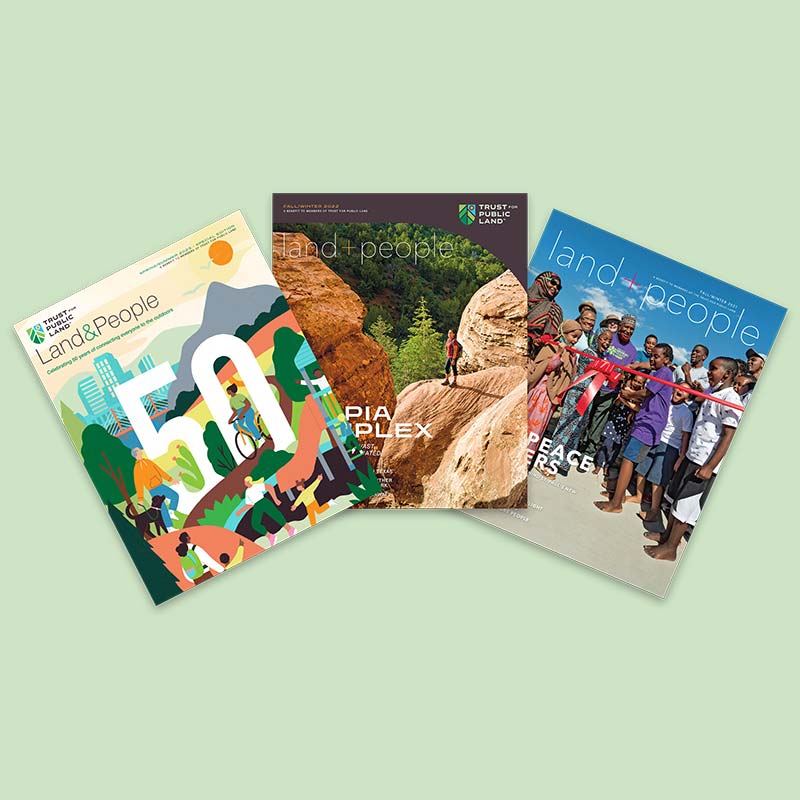
Donate to become a member, and you’ll receive a subscription to Land&People magazine, our biannual publication featuring exclusive, inspiring stories about our work connecting everyone to the outdoors.

